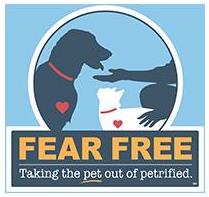 January 2016 – Keeping your pets fit with regular exercise
January 2016 – Keeping your pets fit with regular exercise
It’s a new year, and January is the month to either make (and maintain) or break those resolutions. Most folks put diet and exercise at the top of their list. How about including your pets? January is National Walk Your Pet Month, and following are some simple things you can do to help your canine and kitty, and even your rabbit or ferret, stay in shape with regular exercise.
First of all, pets require an outlet for their energy. Pets who are bored or under-stimulated can become destructive in the home or aggressive toward other family members (pet or human). Some pets even develop separation anxiety as a result of lack of stimulation and further being left alone for a period of time.
Think of walking your dog as great exercise, a training opportunity, and a time to strengthen your all-important bond. Taking your dog out to the same spot to relieve himself day in and day out is not stimulating. Allowing a dog to be free in a backyard to run alone is not exercise. Making good, regular time for walks and exercise as a part of your routine gives dogs something to look forward to. Different walks around your house, local community parks, hiking trails and so forth will expose your dogs to different sights, smells, and sounds. Spending time outside with fresh air, sunshine, and nature is very mentally stimulating and relaxing for humans and pets while building confidence and expending energy. However, on those very cold, winter days when getting outdoors may be too uncomfortable for the both of you, training your dog to walk on a treadmill or do new tricks inside your home can really be fun and rewarding for you and your pet as well.
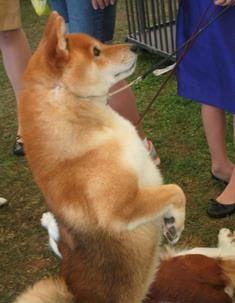

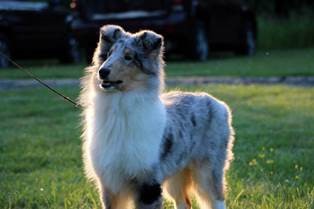
And what about kitty? When trained early, some breeds will calmly walk on a leash outdoors. However, most will feel safer indoors in their own territory. Healthy kittens are active by nature. And while most cats will never learn to run on a treadmill, cats do benefit immensely from some form of regular physical activity as they age and become more sedentary.
Pay attention to what types of toys your cat enjoys most, and rotate toys daily. Most cats enjoy paper bags (cut off any handles before leaving out!) and cardboard boxes. Interact with your cat by throwing balls, using feather sticks and flashlight pointers (never shine directly in your pet’s eyes or other humans in the room!). Make sure your cat has at least one tall cat tree and scratching post in the home, preferably more depending on the number of cats in the home. You can entice your kitty to climb and jump by offering treats and toys. Cats can do well with a buddy, and two will often entertain each other, especially during kittenhood.

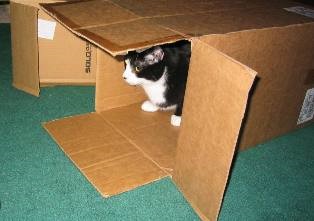
Don’t leave your rabbit out of the exercise plan. Rabbits can be trained to run through obstacle courses and even do tricks through positive reinforcement. Simply by encouraging certain behaviors and rewarding the rabbit with special treats that they only receive during training, you can teach your rabbit to jump through hoops, run through mazes and retrieve small items.
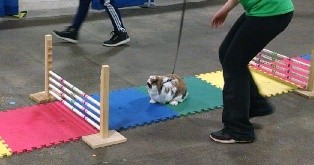
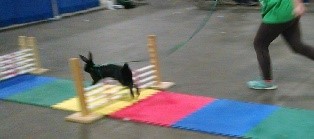
A ferret is another small pet that loves to run and play, so encouraging exercise comes easy. It’s important to let your ferret out of his/her cage daily for proper exercise and human interaction. Otherwise your pet is at risk for obesity by overeating and they will lose muscle tone. It’s important to supervise your ferret because they are curious by nature and love to explore. You might try setting up an exercise pen so they are contained but within a much larger area than their cage. Interact with your pet as much as possible by offering their favorite toys, and rotate the toys daily. Ferrets can also be put in a harness and leash so they can be safely taken outdoors for added stimulation. Another suggestion is to house your ferret in a multi-level cage where he/she can use ramps to expend energy while still safely contained and waiting for their next playtime experience with you.


Ask for advice from your veterinarian
If your pet has any health issues or you just need help getting started on an exercise routine with your pet, ask your veterinarian to recommend activities that suit your individual pet’s needs. Not only does exercise burn calories, improve muscle tone, and reduce your pet’s appetite, an exercise plan will also help protect your pet from becoming overweight or obese, and therefore stay healthier longer.
Recommended Reading:
Environmental Enrichment for Exotic Companion Mammals
Why Environmental Enrichment is Important for Cats
Why managing your pet’s weight is so important
Belle Mead Animal Hospital, Your Other Family Doctors
LIKE us on Facebook, Follow us on Twitter @BMAH121 and Join our Circle at Google+ for news and pet wellness tips. We’re now on Pinterest!










